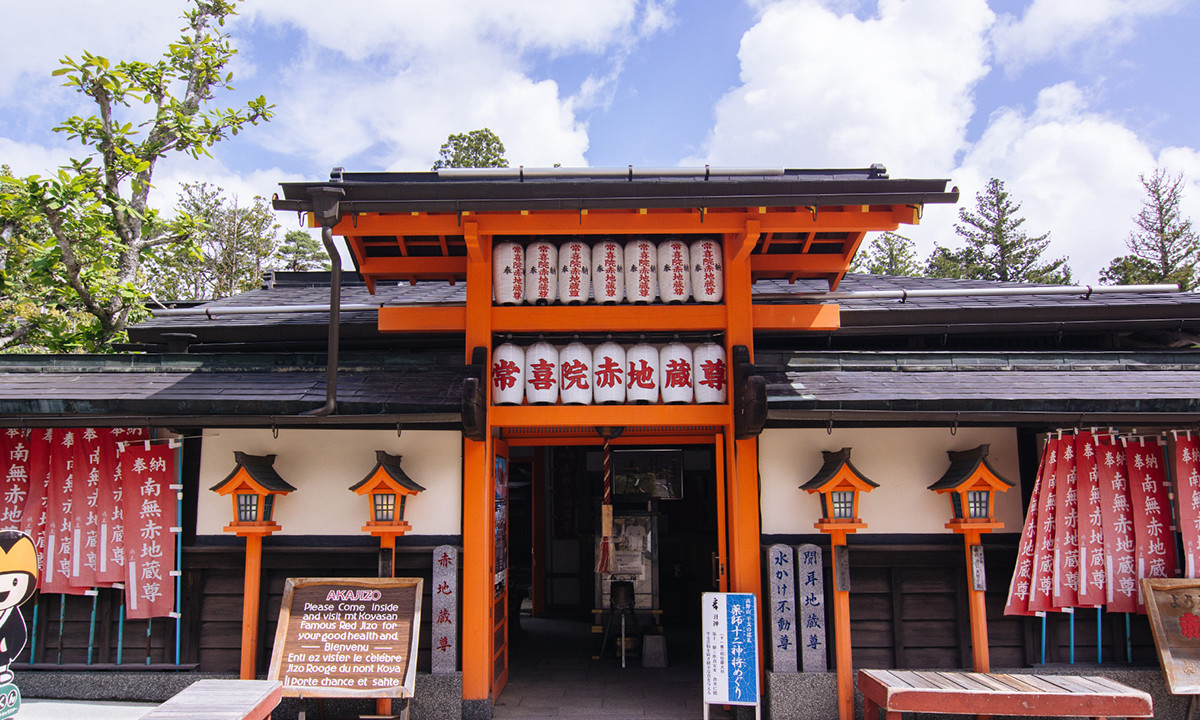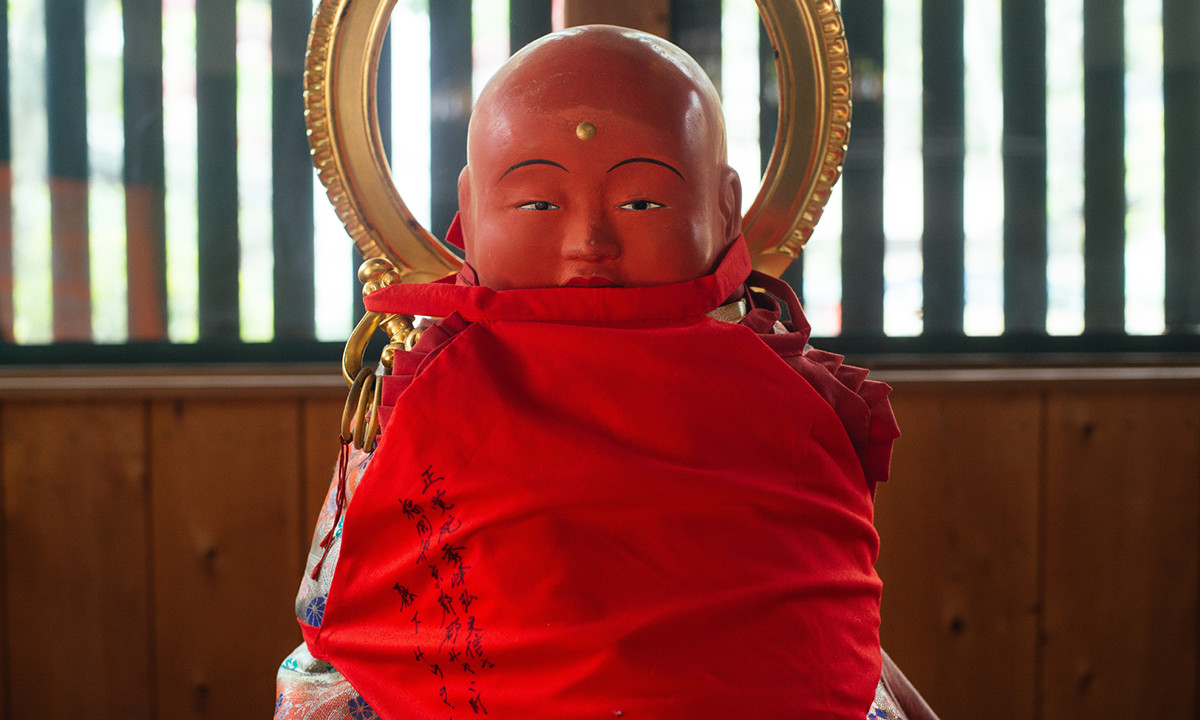About Jokiin
The History of Jokiin Temple
We are very happy to see you.
Please let us introduce briefly about this temple.
The history of Jokiin Temple originated 1,200 years ago.
Bodhisattva Temple Jokiin was founded by Doukou Daishi Jikkei Shonin, who was well known as the first pupil to come up to Mt.Koya with Kobo Daishi as well as top excellent pupil of Kobo Daishi. When Kobo Daishi founded Mt. Koya, he ordered his pupils Jikkei Shonin and Taihan Shonin to build this temple as their accommodation.
However, Shingaku Shonin restored it when the temples were declined in the middle ages. It was more than 800 years ago. Shingaku Shonin was from Omi region and he climbed up Mt. Koya to learn Shingon sect, after becoming the disciple of Tendai sect. Then he restored Jokiin Temple and became the monk of Mt. Koya. His name was on "Honcho Kosoden" (biography of high ranking monks by Mangen Shiban) / "Ojo-den" etc., formed a school of Jokiin. And he was the top scholar monk at the time who finished Besson Zakki – 57 Scrolls, that has been kept in Ninna-ji Temple, Omuro, Kyoto.
Jokiin has undergone many changes after Shingaku Shonin passed away, its location has been moved from Ojyoin-dani to Odawara-dani in the start of Genroku era in the Edo period (1688).
In the first year of Genji Era (1864) during the end of the Edo period, the entire building was burnt down due to conflagration, it was being transferred to and reconstructed next to the current location of the “Rokujino-kane”, and has been merged with the Raigei-in Temple and Mimoroin Temple till now.
Currently, Jokiin Temple is surrounded by Kongobu-ji Temple / Rokujino-kane / Danjo Garan (the precinct for religious practices) / Daishi Organization etc., in the center of Mt. Koya which is a very convenient location for visitors to stay, pray at each places or walk through and so on.
Jokiin Temple has a deep relationship especially with Enshu, Owari, Gifu and Ise regions since Edo era, also after the war, all the prayers have been visiting freely no matter where they come from and repose their ancestors' souls by creating monuments in here, Jokiin Temple, as their Bodhisattva Temple.
The tradition of Shukubo started quite a long time ago, as it was recorded already during the period of ASHIKAGA. The origin was from the locals made a rule of providing accommodations for monks or priests who were constantly on training and made a thatched hut at the mountain, or visitors from far and local distances who made a mentor relationship on their travel follow their masters.
Besides, there is no general Ryokan nor Touristic Hotel at Mt. Koya. The visitors stay in Shukubo, which is officially called Shoenbo (associated lodge), as a traditional habits for prayers at Mt. Koya. There are 52 Shukubo out of 116 temples of Mt. Koya. Each of them has been prestigious since the past, kept many Temple treasures, enshrined remarkably miraculous Honzon and prepared with general facilities. Enjoy some neat Buddhist vegetarian food in a quiet Shukubo, clean up your mind and body also free your mind for a little while. Is it not important to have such moment in our busy modern world?
For either of them, Mt. Koya has been a holy place where Kobo Daishi founded as for primal training for Shingon sect of esoteric Buddhism. We, all the staff of this temple would be extremely happy, if you could feel such moment.
Thank you,
Principal image
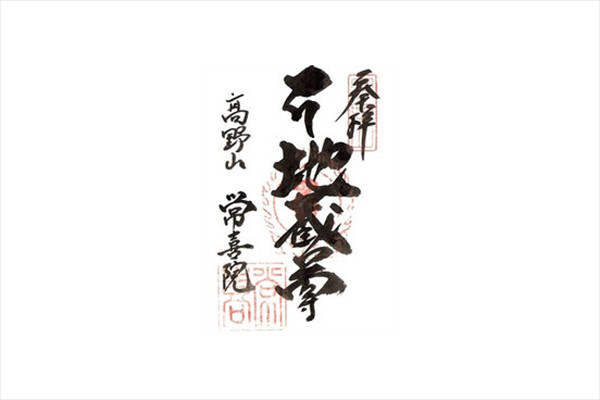
About Main Buddha
Jokiin temple's main Buddha is Jizo Bosatsu.
(The principal image is Jizo Bodhisattva)
Jizō Bosatsu (Japanese), Ksitigarbha Bodhisattva (Sanskrit)
Origin = India / China. Savior from Hell’s Torments.
Savior in Six Realms of Desire & Karmic Rebirth (Reincarnation).
Patron of Children, Expectant Mothers, Firemen, Travelers, Pilgrims, Aborted / Miscarried Babies. Also, guardian of children in limbo.
Affectionately known in Japan as O-Jizō-Sama お地蔵様 or Jizō-san.
Jizō is the only Bodhisattva portrayed as a monk -- shaven head, no adornments, no royal attire, nearly always dressed in the simple robe (kesa) of a monk. A halo often surrounds the head. Jizō’s customary symbols are the shakujō 錫杖 (six-ring staff) and the hōjunotama 宝珠の玉 (wish-granting jewel). When Jizō shakes the staff, it awakens us from our delusions, to help us break free of the six states of rebirth and achieve enlightenment. The jewel (Skt. = Cintamani) signifies Jizō’s bestowal of blessings on all who suffer, for the jewel grants wishes, pacifies desires, and brings clear understanding of the Dharma (Buddhist law).
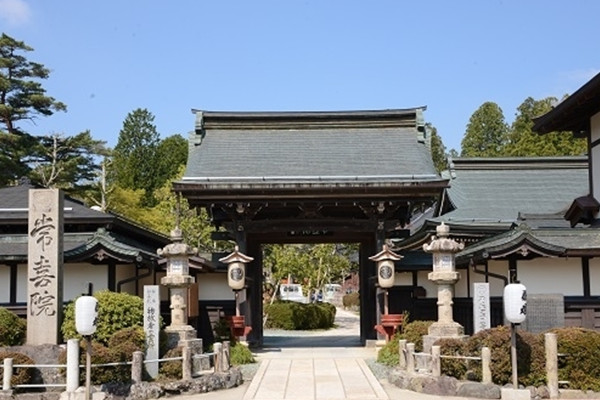
One of the most beloved of all Japanese divinities, Jizō works to ease the suffering and shorten the sentence of those serving time in hell, to deliver the faithful into Amida’s western paradise (where inhabitants are no longer trapped in the six states of desire and karmic rebirth), and to answer the prayers of the living for health, success, children, and all manner of mundane petitions. In modern Japan, Jizō is a savior par excellence, a friend to all, never frightening even to children, and his/her many manifestations -- often cute and cartoon-like in contemporary times -- incorporate Taoist, Buddhist, and Shintō elements.
Jizō is a Bodhisattva (Jp. Bosatsu), one who achieves enlightenment but postpones Buddhahood until all can be saved. Jizō is often translated as Womb of the Earth, for JI 地 means earth, while ZŌ 蔵 means womb. But ZŌ can also be translated with equal correctness as “store house” or “repository of treasure” -- thus Jizō is often translated as Earth Store or Earth Treasury. Jizō embodies supreme spiritual optimism, compassion, and universal salvation, all hallmarks of Mahayana Buddhism.
Jizō appears in many different forms to alleviate the suffering of the living and the dead. In modern Japan, Jizō is popularly venerated as the guardian of unborn, aborted, miscarried, and stillborn babies (Mizuko Jizō). Jizō is also one of the 13 Deities 十三仏 (Jūsanbutsu) of the Shingon Sect of Esoteric Buddhism in Japan.
Akajizo hall
Welcome, Red Jizo is waiting.
This Jizo is called Eho-Jizoson(恵宝地蔵尊) which comes from Jizo, as the fortune and wealth built-in <(内)蔵> the earth<(大)地>which gives the blessings <恵> of its riches <宝>to all living things .
Jizo is one of the bodhisattva (=altruism practitioner) who help all sentient beings. Is called "(lit. Crimson leaf) Kohaku-Jizo" from being red as a baby, and having gold leaf applied to his plump and happy-looking body.
■Likes
Red things
<Red and white buns, Kintoki carrots, Japanese plums, Fukujinzuke, Daifuku rice cakes, Sanbokan sour oranges, Sweet roasted chestnuts, Peach)
■Appearance
The red color of his body comes from Niumyojin’s Niu (cinnabar) vermilion, Mt. Koya village shrine.
<Cinnabar was considered as hermit’s medicine (an elixir of life) in China long ago>
Including Nifu-Myojin, Japanese gods are said to get young vitality by
■Clothes
Usually, Jizos wear a big Buddhist stole called Jizo-Kesa, but this statue wears the Kshitigarbha clothing drawn in a Mandala that Kobo Daishi brought from the Tang dynasty.
■Possessions <Khakkara (pewter staff) and jewel>
The Khakkara on his right hand, originally a Buddhist altar fitting that rids sentient beings of obstacles and desire for worldly things with its sound, here an infant has it and serves the role of an enjoyable rattle toy sound.
The Cintamani stone
■Lotus seat <lotus pedestal>
There is a heaven far to the westward of this world where Jizo is active. It is said that there is a lotus pond from which righteous people who finished their lives in this world are born again
■Hobyo <Treasure vase>
The shape of the urn under the lotus pedestal is a Hobyo from which wealth come out and symbolizes fertility. Aizen-Myoo, who governs passions, has a red Shintai, and also sits on a lotus flower on a Hobyo. In India, where Buddhism originated, vases are sometimes the symbol of the god of fortune.
■The meaning of gilding gold leaf to the statue
Bodhisattvas beginning from Jizo, are said to fulfill all sentient (living) creatures wishes and become Buddha (attain Buddhahood) after liberating them from suffering. As the distinctive color of the Buddha is gold, applying gold leaf to this statue means as a wish to attain Buddhahood promptly.
Please gild gold leaf on your concerns and offer a prayer. You can take it as a lucky charm.
Enjoy the smell of sandalwood trees from the gold leaf as well.
Join your hands in prayer
Jokiin where the Jizo is considered as its principal image, abbot, Eishun Kato, Yours sincerely
Cooperation, the Buddha artisan, Buddhist images and altar fitting maker, Hoju Hase, Bow
Greeting from master priest
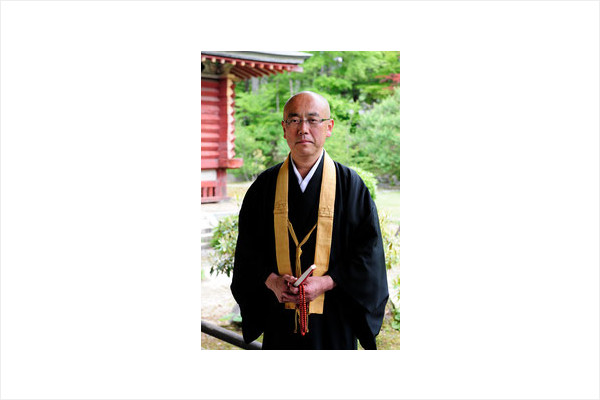
Katou Eisyun, the Chief Priest of Koyasan Jokiin
Hello, Everyone,
This is Katou Eisyun, the Chief Priest of Koyasan Jokiin.
Since it’s initial opening by Kobo Daishi 1,200 years ago, the Koyasan is a place where many people gather to pray with wish, and has come to prosper as one of the three most sacred grounds of Japan. It is a mountaintop located holy city unparalleled in Japan.
As it is recorded as a world cultural heritage by the UNESCO, not only Japanese, but people from all over the world are climbing it to visit for praying.
We recommend to visit and feel something at "Danjo Garan";the Great Stupa of Shingon Esoteric Buddhism (central training hall), "Kongobuji";the head temple of Shingon Buddhism and Okuno-in;the source of the Kobo Daishi's (a.k.a. Kuukai) faith. The tombstones on the Okuno-in way, said to be 200, 000 or even 500,000, are truly impressive.
There are a lot of places that have enchanted people climbing and visiting there including Reihoukan Museum which is also called Shousou-in on the mountain.
Kobo Daishi called Koyasan "village of Buddha’s existence itself". I hope you will experience the history and culture of Koyasan, the village of Buddha’s existence itself and find your peace of mind here.
